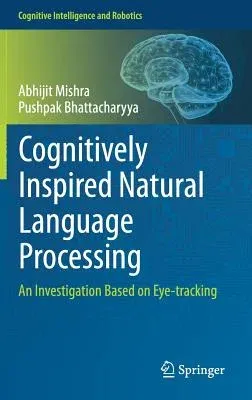Abhijit Mishra
(Author)Cognitively Inspired Natural Language Processing: An Investigation Based on Eye-Tracking (2018)Hardcover - 2018, 9 August 2018

Qty
1
Turbo
Ships in 2 - 3 days
In Stock
Free Delivery
Cash on Delivery
15 Days
Free Returns
Secure Checkout

Part of Series
Cognitive Intelligence and Robotics
Print Length
174 pages
Language
English
Publisher
Springer
Date Published
9 Aug 2018
ISBN-10
9811315159
ISBN-13
9789811315152
Description
Product Details
Book Edition:
2018
Book Format:
Hardcover
Country of Origin:
NL
Date Published:
9 August 2018
Dimensions:
23.39 x
15.6 x
1.27 cm
ISBN-10:
9811315159
ISBN-13:
9789811315152
Language:
English
Location:
Singapore
Pages:
174
Publisher:
Weight:
449.06 gm